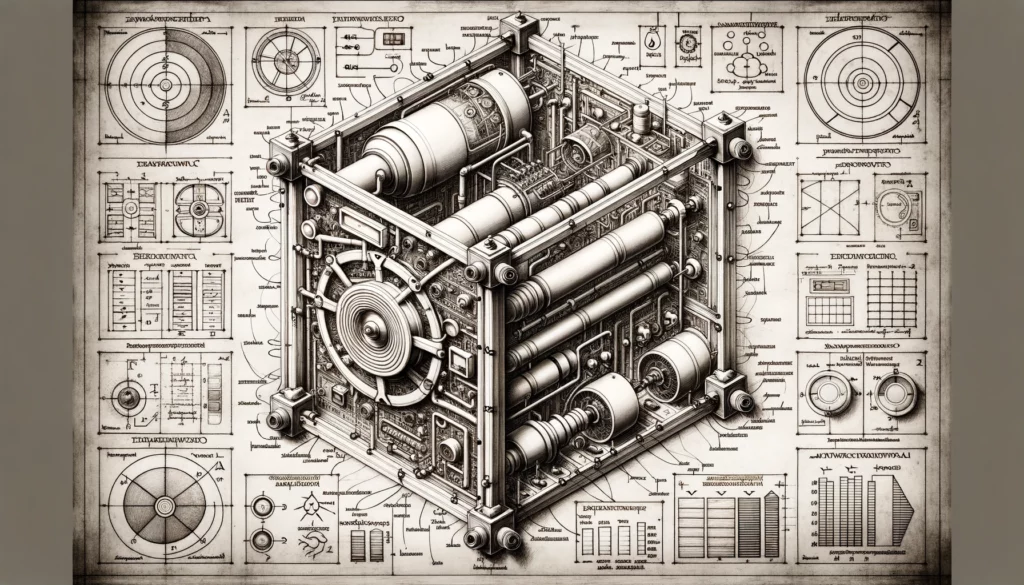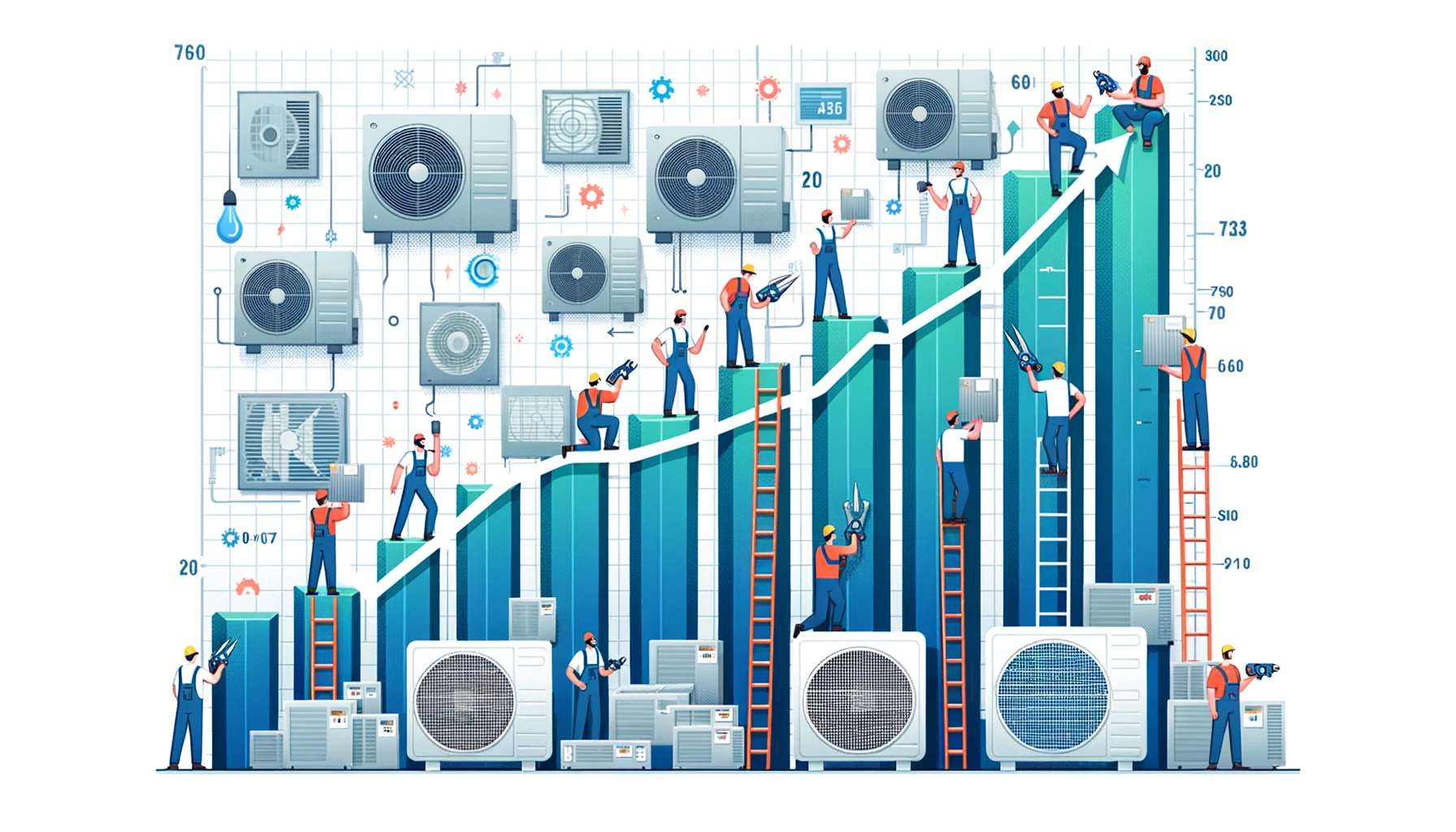Introduction
The HVAC (Heating, Ventilation, and Air Conditioning) industry has been a silent yet paramount player in ensuring comfort and environmental control in our spaces. As we dwell deeper into the 21st century, the focus has sharply turned towards energy efficiency, not just as a means to cut down operational costs but also as a crucial step towards environmental conservation. This article, enriched with insights from various credible sources, aims to navigate through the evolution, present scenario, and future trajectories of energy efficiency in HVAC systems, exploring the challenges, innovations, and the pivotal role of various stakeholders in shaping the industry.
Historical Perspective of HVAC Systems
(Source: The Evolution of HVAC Systems over the Decades – Energy5)
The journey of HVAC systems has been nothing short of revolutionary. From the initial models, which were significantly energy-intensive, to the modern units that prioritize energy conservation, the evolution has been marked by technological advancements and a growing awareness of sustainability. The modern air conditioners, for instance, utilize approximately 50% less energy than their counterparts from the 1990s. This evolution has not only been pivotal in reducing energy consumption but also in ensuring that the cooling effectiveness is not compromised, thereby aligning comfort with conservation.
The Present Scenario: Challenges and Innovations
(Source: The Air Conditioning Industry – Contemporary Market Review – LinkedIn)
Navigating through the present scenario of the HVAC industry, we encounter a landscape where challenges and innovations coexist, shaping the trajectory of energy efficiency. The adoption of high-efficiency units, while crucial, is often impeded by challenges such as the high initial costs and regulatory constraints. Moreover, the rising electricity prices and stringent government regulations concerning energy consumption and environmental impact pose additional hurdles. However, these challenges have also paved the way for innovations aimed at enhancing energy efficiency and reducing environmental impact. From the development of smart HVAC systems that optimize energy usage through intelligent controls to the integration of renewable energy sources, the industry is witnessing a surge in innovations aimed at mitigating challenges and enhancing energy efficiency.
4. Case Studies or Real-world Implementations
The implementation of energy-efficient HVAC systems in various sectors provides insightful case studies that highlight the strategies, challenges, and outcomes of such implementations. For instance, the adoption of smart HVAC systems in commercial buildings, which utilize IoT and AI to optimize energy usage, has resulted in significant energy savings and reduced operational costs. Similarly, the integration of HVAC systems with renewable energy sources in residential settings has not only reduced energy consumption but also minimized environmental impact. These case studies provide practical insights into the implementation challenges, strategies employed, and the tangible benefits derived from the adoption of energy-efficient HVAC systems.
5. The Road Ahead: Future Trajectories in HVAC Energy Efficiency
(Source: Recent Trends In HVAC And Energy Efficiency – Forbes)
As we gaze into the future of HVAC systems, the emphasis on energy efficiency is poised to intensify, with trends indicating a steadfast focus on reducing energy consumption and enhancing sustainability. The projected growth in energy consumption for air conditioning infrastructure, especially in the wake of global warming, underscores the imperative need for enhanced energy efficiency. The opportunities for improved efficiency are vast, and by 2030, it is anticipated that building energy use could be reduced by more than 20% using technologies that are deemed cost-effective today. The future will likely witness the emergence of more advanced technologies, innovative strategies, and stringent regulatory frameworks aimed at further enhancing energy efficiency in HVAC systems.
6. The Role of Stakeholders
The journey towards enhanced energy efficiency in the HVAC industry is a collective endeavor, involving various stakeholders, each playing a pivotal role in shaping the industry’s trajectory. Manufacturers are at the forefront, innovating and developing advanced HVAC systems that prioritize energy efficiency. Policymakers, on the other hand, are tasked with crafting and enforcing regulatory frameworks that promote energy conservation and sustainable practices within the industry. Consumers, too, play a crucial role by adopting energy-efficient HVAC systems and practices, thereby driving demand and encouraging further innovations in the industry. The collective efforts, collaborations, and strategic alignments among these stakeholders are crucial in navigating through the challenges and steering the industry toward a sustainable, efficient, and environmentally friendly future.
7. Conclusion
Navigating through the intricate landscape of the HVAC industry, we witness a tapestry where challenges and opportunities coalesce, shaping the future trajectories of energy efficiency. From the historical evolution of HVAC systems, marked by significant advancements in energy efficiency, to the present scenario, characterized by a blend of challenges and innovations, and gazing into the future, which unfolds a horizon rich with opportunities for further enhancements in energy efficiency, the journey is both complex and enlightening. The role of various stakeholders, from manufacturers and policymakers to consumers, is pivotal in steering the industry towards enhanced energy efficiency, sustainability, and environmental conservation. As we move forward, the collective efforts, innovations, and strategic alignments among all stakeholders will be crucial in harnessing the opportunities, navigating through the challenges, and propelling the HVAC industry toward a future that is not only energy-efficient and sustainable but also conducive to global energy conservation and environmental preservation efforts.
FAQs
Q1: How has the HVAC industry evolved in terms of energy efficiency?
A1: The HVAC industry has witnessed significant advancements in energy efficiency, with modern systems utilizing substantially less energy compared to older models, while ensuring optimal performance and comfort.
Q2: What are the challenges faced by the HVAC industry in adopting energy-efficient technologies?
A2: Challenges include high initial costs, regulatory constraints, and rising electricity prices, which often impede the widespread adoption of energy-efficient HVAC technologies.
Q3: What role do various stakeholders play in enhancing energy efficiency in the HVAC industry?
A3: Stakeholders, including manufacturers, policymakers, and consumers, play crucial roles in innovating, regulating, and adopting energy-efficient HVAC systems and practices, collectively shaping the industry’s trajectory.
Q4: What does the future hold for energy efficiency in the HVAC industry?
A4: The future unfolds a horizon rich with opportunities for further enhancements in energy efficiency, characterized by advanced technologies, innovative strategies, and stringent regulatory frameworks aimed at reducing energy consumption and enhancing sustainability.


